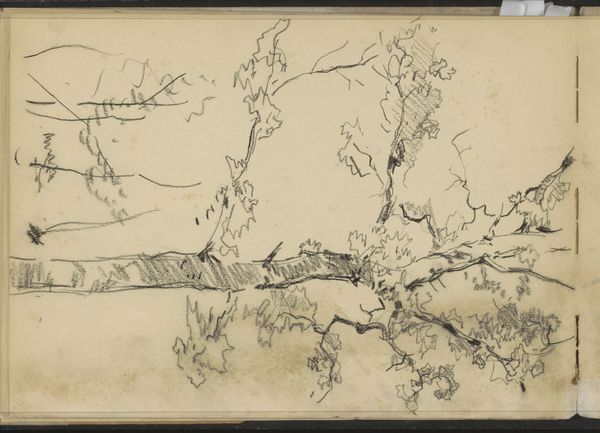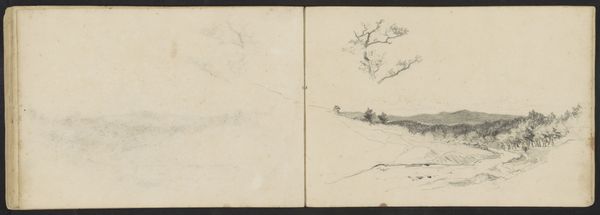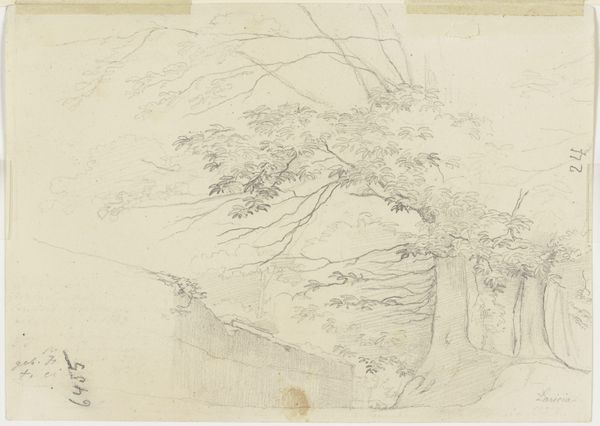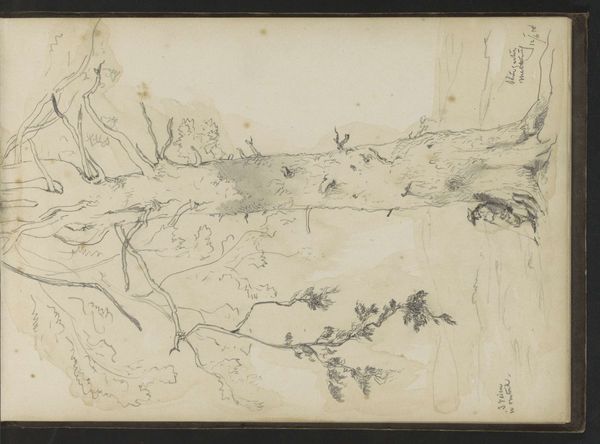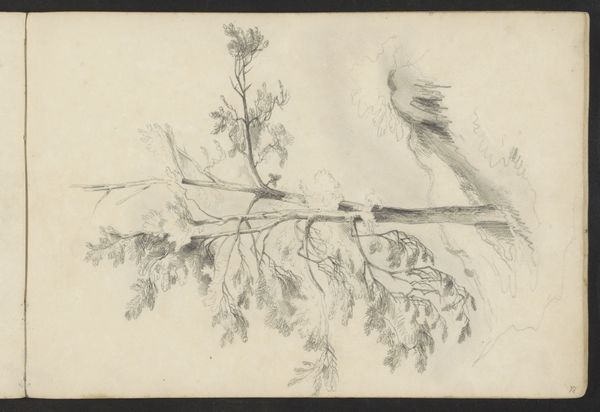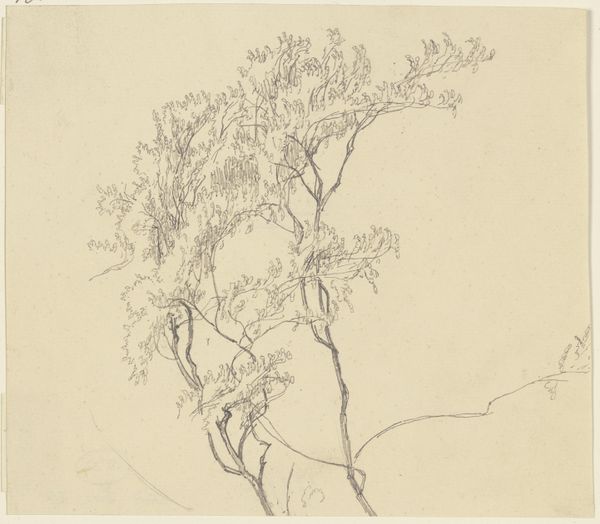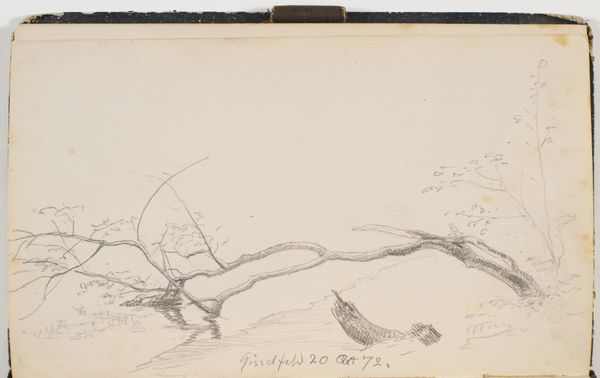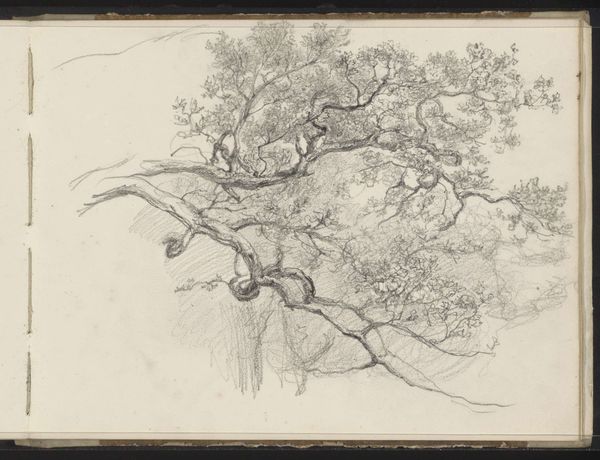
#
tree
#
amateur sketch
#
toned paper
#
light pencil work
#
pen sketch
#
incomplete sketchy
#
personal sketchbook
#
ink drawing experimentation
#
pen-ink sketch
#
sketchbook drawing
#
sketchbook art
Copyright: Rijks Museum: Open Domain
Editor: This delicate pen and ink sketch, titled "Boom bij Trapjesweg te Gelderland," was created by Johannes Tavenraat sometime between 1842 and 1868 and is now held at the Rijksmuseum. There's a kind of tentative quality to the lines that makes me feel like I’m looking at something very private, like a page torn from the artist’s sketchbook. What stands out to you? Curator: What intrigues me is the immediacy of the sketch and its connection to artistic labor. Look at the artist's hand present in each line. We are witnessing Tavenraat’s process: his active engagement with representing nature. Consider the context: cheap paper and ink allowing a burgeoning class of artists to explore landscape. It's a democratization of artistic materials, isn't it? How does the unfinished quality of the sketch influence your understanding? Editor: I guess I hadn't thought about it like that. The sketchiness did initially make it feel informal, more of a personal exercise. So, the cheap materials made art creation more accessible, it lowers the barrier, doesn't it? Curator: Precisely. It moves away from commissioned portraits or grand historical paintings, focusing on readily available subjects and cheaper, accessible methods. Did this shift potentially open the doors to explore different styles? Editor: I think so. You're drawing attention to the way accessible material conditions changed the type of art being made and who was able to create. Thank you, this has given me a lot to consider about materials, class, and production. Curator: Indeed. Focusing on production, and making becomes crucial to broadening the very definition of 'art.'
Comments
No comments
Be the first to comment and join the conversation on the ultimate creative platform.
